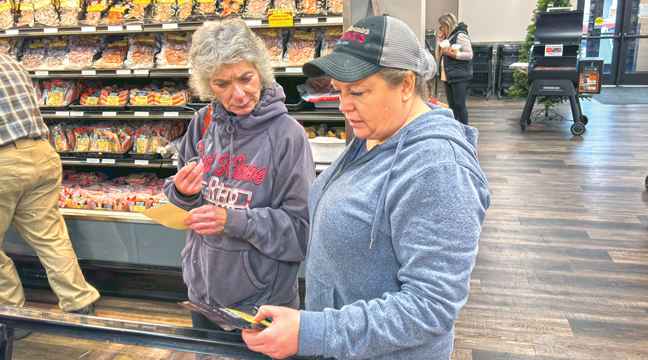We’re poisoning ourselves and we’re doing it with something we all love. Sugar.
Recently I watched the documentary FED UP for one of the college courses I’m taking. The premise behind it is that we’re facing an obesity and diabetes epidemic and sugar is to blame.
The film takes an in-depth look at the many problems in our food industry and the negative impact they’re having on society. The issue is being called the greatest health crisis of our time. Sugar has been deemed the cigarettes of the 21st Century.
The documentary questions why we’re continuing to gain weight even though we’re exercising more than ever before. It points a finger at numerous culprits – food companies, marketing, lobbyists, ineffective government, school lunch programs and poor food education.
Everyone knows if we eat too much and don’t exercise enough we’re going to gain weight. We know a calorie isn’t a calorie; a handful of nuts are more nutritious than a handful of cookies. But it’s not that simple, and what many of us don’t know is that much of the food we think is healthy really isn’t.
Low-fat foods are full of sugar yet marketed as healthier options than their full-fat counterparts. I was appalled to discover the “healthy” foods I’d been feeding my family actually weren’t.
Mass-produced food is filled with sugar. Of the thousands of food products available in our stores, 80% of them contain some form of it. In today’s society who has the time and energy to cook from scratch?
Convenience foods are easy to turn to when both parents come home after a long day at work and are faced with hungry families.
Sugar is a highly addictive drug, in fact it’s been found to be as addictive as cocaine and heroin, and we’ve become addicted. People born after 1980 have literally grown up surrounded by sugar-laden foods, and they have a lower lifespan than their parents because of it.
Type 2 diabetes was unheard of in children just a few decades ago. Today childhood cases of the disease are a rapidly growing crisis.
The 1977 McGovern Report recommended Americans eat less sugar and fat. After it was released the food industry objected, and lobbyists proposed eating more low-fat foods instead. The government rewrote the report, and the food industry began revising thousands of its products.
Unfortunately food doesn’t taste very good when the fat is taken out. The food industry fixed this problem by adding sugar. The result was that by the year 2000 we’d doubled our daily intake of it.
The USDA recommends no more than six to nine teaspoons of sugar a day; the average American’s actual daily intake is far greater than that.
Schools were forced to turn to the food industry and their highly processed, sugary foods after the child nutrition program was slashed in 1981 and they couldn’t afford to make meals from scratch any more. Fast food, candy and soda are available in many schools today.
I remember my mom making me eat the school lunch every day because it was good for me. Unfortunately I couldn’t tell my children the same thing.
The government has placed private profit and special interests ahead of protecting the public’s health.
After FED UP ended, my husband turned to me and asked, “What are we going to eat?” I didn’t have an answer. Although I make most of my family’s meals from scratch, many of the products I use to make those meals contain sugar.
I went through my kitchen and found a lot of sugar I didn’t realize was there. Ketchup, mayonnaise, salad dressings, yogurt, barbeque sauce, stir-fry sauce, taco sauce, canned soup and soup mixes, pasta sauce, diced tomatoes and canned beans all listed sugar in their ingredients.
I have to admit most of what FED UP presented I already knew, however I’d never put all the pieces together to look at the big picture. It’s scary.
It is possible to eat well and be healthy. We just have to work harder at it and return to the type of meals our grandparents used to eat.
I know what’s going to be at the top of my list of New Year’s resolutions this January. I hope I can follow through.







